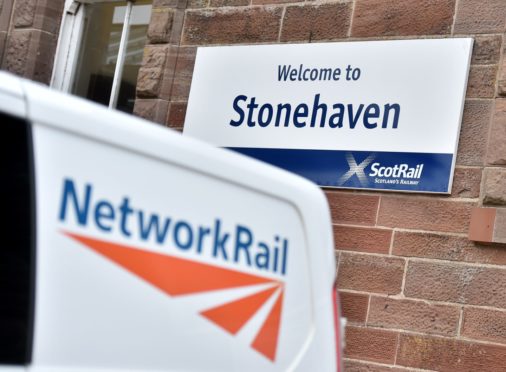A rail body’s catalogue of failures caused the fatal Stonehaven rail crash, newly released court documents allege.
The Crown will prosecute Network Rail at the High Court in Aberdeen tomorrow and officials have now made the charge public.
The court case follows two lengthy probes into the circumstances surrounding the tragedy on August 12, 2020, which killed the train’s driver Brett McCullough, conductor Donald Dinnie and passenger Christopher Stuchbury, who was travelling to work in Fife.
Six others were injured in the collision, which happened after a period of heavy rainfall.
The drain was allegedly placed upside down
The Crown has charged Network Rail with failing to conduct itself in a way that would prevent people from the risk of serious injury and death.
The charge is split into five parts.
First, the Crown alleges Network Rail did not ensure its contractor Carillion built a drain at the side of the crash site in accordance with design drawings.
The charge alleges that the drain had parts missing, improperly lined up or placed upside down, and so it could not work properly.
Second, the Crown accuses Network Rail of failing to hold a handover meeting with now-defunct Carillion to check the drain worked.
Third, the charge alleges Network Rail did not create a record of the drain and so its staff, who did not know the drain existed, could not inspect it.
Fourth, Network Rail is accused of failing to adequately train its staff on how to use a specialist computer program to analyse weather forecasts.
As a result, nobody organised an extreme weather action meeting on the day of the crash.
And fifth, the Crown accuses the rail body of failing to impose a speed restriction near the crash scene or caution the driver to slow down despite reports of severe weather, landslips and flooding in the area.
Records state the train was travelling at 72.8mph at the time of the crash. A speed restriction could have reduced it to 5mph.
Rail authorities have previously stressed that Mr McCullough did nothing wrong by driving at that speed.
He was obliged to follow instructions on the recommended speed set by colleagues in a control room based on the condition and the normal speed limit.
The charge ends by alleging that, as a consequence of these alleged failures, stones were washed out onto the railway track and the train then struck the stones causing it to derail and strike a bridge parapet, causing three deaths and six injuries.
It is alleged Network Rail’s actions breach two parts of the Health and Safety at Work Act 1974.

